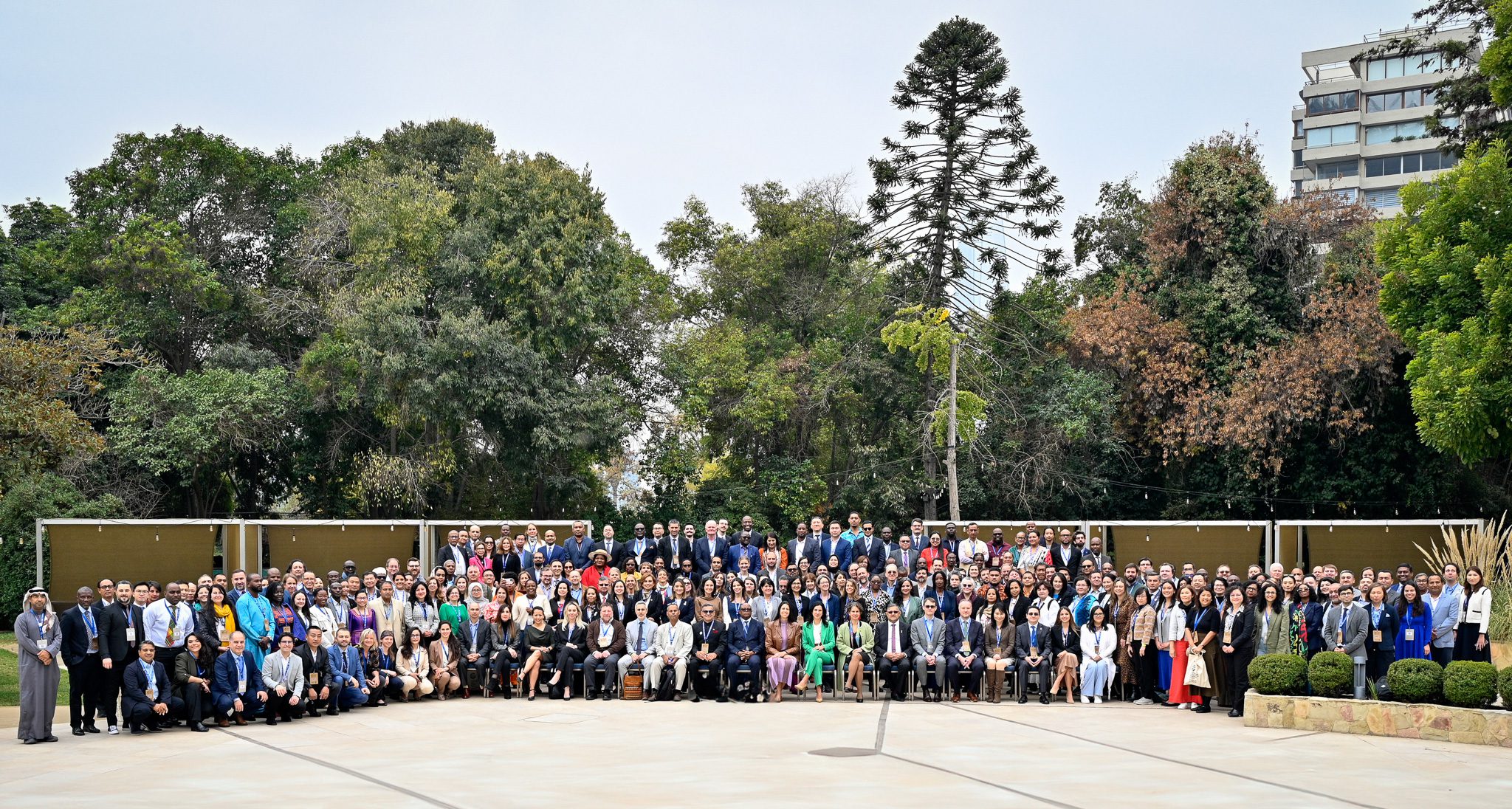By Cary Shepherd, Founder & CEO of Greenomix
Introduction
At the recent UN Climate Change Conference (COP29) in Baku, Azerbaijan, a significant breakthrough was achieved with the endorsement of new standards under Article 6 of the Paris Agreement. This milestone paves the way for operationalizing international carbon markets, potentially unlocking an estimated $250 billion annually for climate projects in developing nations. For businesses worldwide, this development heralds new avenues for corporate sustainability, investment, and participation in global emission reduction efforts.
Understanding Article 6 of the Paris Agreement
Article 6 facilitates international cooperation to reduce greenhouse gas emissions via market and non-market mechanisms. It comprises three key components:
- Article 6.2: Cooperative Approaches
Allows countries to trade emission reductions through voluntary agreements, aiding in meeting their Nationally Determined Contributions (NDCs). For businesses, this opens opportunities in international carbon trading, leveraging standardized credits to offset emissions.
- Article 6.4: The Carbon Credit Mechanism
Establishes a centralized framework for generating and trading carbon credits, ensuring environmental integrity and preventing double-counting and greenwashing. The new standards enhance transparency and credibility, making carbon markets more accessible and reliable for investors and companies.
- Article 6.8: Non-Market Approaches
Promotes collaboration through non-market means like capacity building and technology transfer. Though less emphasized at COP29, it remains crucial for a holistic climate action approach.
Change the World - Subscribe Now
Details of the COP29 Outcome
Approving the Article 6.4 standards on the first day of COP29 marks a shift from previous prolonged negotiations. Developed by the Supervisory Body, these standards aim to operationalize carbon markets by 2026.
The Azerbaijani COP29 presidency called the agreement a “breakthrough” and an “essential step” toward a functional UN carbon market. By standardizing methodologies for carbon credit projects, the framework should make climate action more efficient and cost-effective, easing financial burdens on countries.
Establishing a New Framework for Article 6.4
The new Article 6.4 standards emphasize the following principles, among other requirements:
- Ambition and Progression: Encouraging increasingly ambitious emission reduction targets, fostering low-carbon innovation.
- Transparency and Integrity: Mandating real, measurable, verifiable emission reductions with transparent methodologies and rigorous monitoring.
- Equitable Benefit Sharing: Ensuring mitigation benefits are fairly distributed, supporting sustainable development in host nations.
- Risk Management and Assurance: Recognizing inherent risks, the standards stipulate participants should obtain insurance or guarantees against avoidable reversals.
Importantly, while the UN’s framework strives to standardize quality criteria, success is not guaranteed. The Clean Development Mechanism (CDM) showed that UN approval doesn’t ensure effectiveness or market acceptance. These new standards, however, mark a significant improvement, offering a more robust foundation based on modern policy and climate science. It’s essential to recognize both the progress and the limitations of these standards.
Implications for Businesses and Climate Finance
The endorsement of these standards invigorates the carbon market, offering opportunities for businesses aiming for net-zero emissions—a necessity for corporate responsibility and planetary health. With growing recognition of climate urgency, net-zero targets are becoming standard, driven by customer, employee, and investor demands.
- Future access to UN-Recognized Carbon Credits: Companies can invest in projects meeting stringent international standards, enhancing sustainability credibility. This access allows businesses to offset unavoidable emissions, crucial for net-zero, satisfying stakeholders and strengthening reputation.
- New Avenues for Emission Mitigation: The $250 billion influx opens investment opportunities in renewable energy, reforestation, and innovative carbon removal technologies. These projects enable businesses to reduce and offset emissions, aligning with net-zero commitments and global climate goals.
- Alignment with Stakeholder Expectations: Participating in standardized carbon markets demonstrates climate leadership, meeting demands for environmental stewardship from customers, employees, and investors. This supports corporate sustainability objectives and the broader low-carbon economy transition.
- Integration into Net-Zero Strategies: The development provides new pathways for integrating high-quality carbon credits into net-zero plans. Leveraging these mechanisms ensures emission reduction efforts are impactful and aligned with international climate objectives.
Challenges and Considerations
Despite the positive outlook, several challenges merit attention:
- Quality Assurance: Ensuring carbon credits represent genuine, lasting emission reductions is crucial. Concerns include “reversal risks” (stored carbon released) and “additionality” (projects occurring without carbon finance). Businesses must conduct thorough due diligence to select high-quality credits, maintaining net-zero integrity and avoiding reputational risks.
- Evolving Regulatory Conditions: Rapidly changing domestic and international regulations create complexities, as the Paris Agreement is not uniformly recognized globally. Differences in policies and compliance requirements necessitate that businesses stay informed and adapt to ensure investments in carbon credits contribute meaningfully to net-zero goals.
Strategic Approaches for Businesses
To capitalize on the opportunities and mitigate risks, businesses should consider the following strategies:
- Engage Early and Proactively
Engage early to shape projects, secure high-quality credits, and influence best practices. Engaging with stakeholders enhances reputation and relations.
- Diversify Carbon Credit Portfolios
Diversify carbon credit projects and geographies to mitigate sector or region risks, ensuring all credits have third-party verification.
- Assure Credits and Implement Risk Management Practices
Use verified, high-integrity credits to maintain credibility and meet regulations. Continuously manage risks by monitoring projects, staying updated on regulations, and securing insurance or guarantees against reversals or underperformance.
- Align with Scientific and Regulatory Developments
Align strategies with current science and policies to ensure effective, compliant emission reductions, enhancing long-term success and resilience.
Conclusion
The approval of Article 6.4 standards at COP29 is a pivotal advancement in climate action, establishing a standardized carbon market framework that unlocks financial flows to developing nations and opportunities for businesses to contribute to emission reductions.
Realizing this potential requires strategic engagement and diligent management. Businesses must navigate complexities with strategies that prioritize integrity, risk management, and alignment with climate goals. Proactive participation enables companies to mitigate their emissions and drive progress toward a sustainable future. Those that act now will be rewarded for early and strategic action.
RELATED ARTICLE: Microsoft Secures 8 Million Carbon Removal Credits in Historic Deal with BTG Pactual Timberland Investment Group
About the Author
Cary Shepherd is the Founder and CEO of Greenomix, a company that brings sophisticated Carbon Management to the Voluntary Carbon Market (VCM). Greenomix provides expert oversight, risk mitigation, and performance optimization for carbon credit portfolios, offering services such as carbon portfolio management, assurance, and intelligence, as well as flexible financial solutions for carbon project investment. By delivering the same level of professionalism found in modern financial management, Greenomix enables businesses to navigate the VCM with confidence and contribute effectively to global climate goals.

Cary is a specialist in climate law and policy with a decade of experience across the public and private sectors. In the private sector, he has counseled clients on carbon market transactions, conducted due diligence reviews of carbon and sustainability-related private equity investments, and advised on matters related to climate finance. In the public sector, he has designed and negotiated key provisions of landmark climate legislation, including the development of blended climate finance programs, represented clients in regulatory and legislative hearings, and litigated cases concerning environmental and energy law.
Before founding Greenomix, Cary served as an Associate Director at Pollination, was a Fellow at Northwestern Pritzker School of Law’s Bluhm Legal Clinic, and acted as the Policy Director at the Illinois Environmental Council. He also worked on President Barack Obama’s reelection campaign and was a Fellow in the Chicago Mayor’s Office. Cary received his Juris Doctor from The University of Chicago Law School and is licensed to practice law in the State of Illinois.












